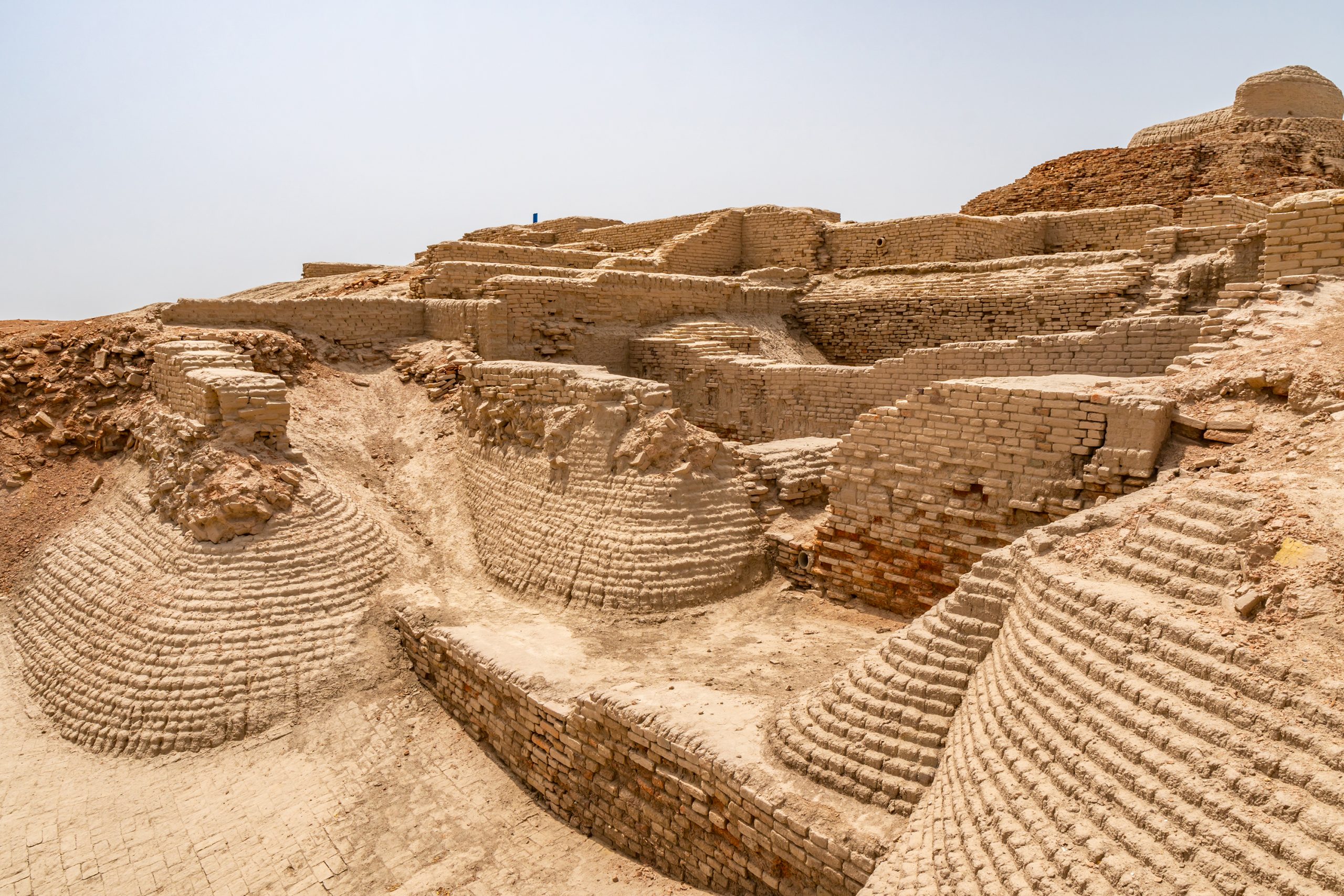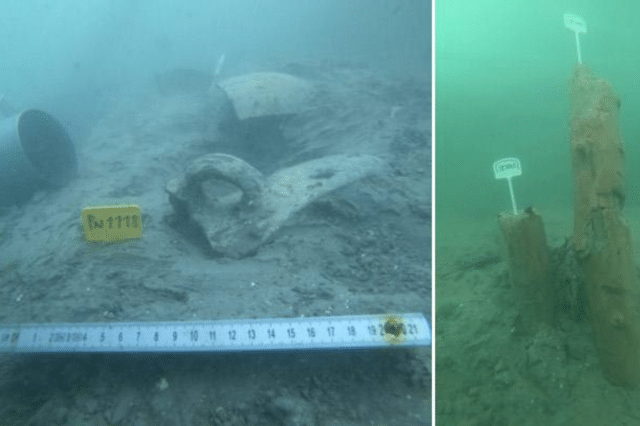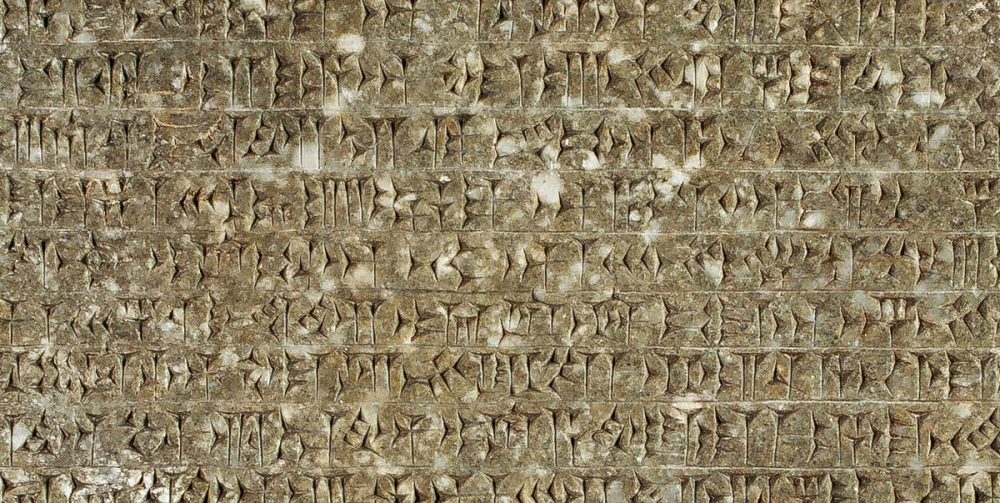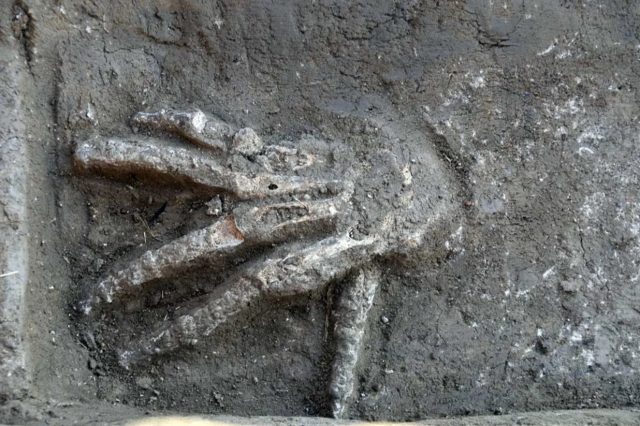The ancient Indus Valley civilization is one of the most extraordinary in history, nevertheless, we know so little about them.
In the Early 1900, there were frequent incidences of soapstone seals, stone sculptures, pottery, and human figurines popping up around the ancient Indus Valley area in British India.
The artifacts puzzled experts because of their unique inscriptions in a never-before-seen written language.
Intrigued by this, archaeologists Daya Ram Sahni and R.D. Banerji began the excavation work and discovered a 4,500-year-old civilization, a civilization completely missing from the historical records. Probably one of the most urban civilizations in ancient human history. It prospered alongside Ancient Egypt, cultures in Mesopotamia, and China.
Mohenjo-Daro and Harappa were considered twin cities in ancient times and flourished on the banks of the River Indus in modern-day Pakistan. Mohenjo-Daro, also known as Mount of the Dead, is one of the oldest and largest cities of the early civilizations known to man. Its mysterious culture emerged almost 4500 years ago and remained for thousands of years.
This city profited from its fertile lands of Indus River flood plains and trade with nearby civilizations of Mesopotamia (modern-day Iraq).
Sadly, after its huge period of excellent glory, the city got buried under the sands of time.
Archaeologists believe that over 80,000 people once occupied these cities, but only 52 skeletons have been discovered on these sites so far.
What happened to these cities?
Was there an invasion? Was there an earthquake? What happened to these cities? Experts are unwilling to agree on one scenario.
If you ever happen to visit these mysterious cities, everything will feel alive, as if there are still people living in their homes but just have gone for a day out and will come back any time.
According to scientists and archaeologists, this civilization started to decline around 1800 BC. Evidence shows that their massive trade with Mesopotamia (modern-day Iraq) almost ended by the time. The advanced drainage system was blocked or destroyed, their writing script began to vanish, and the standard weights and measure scales were no longer used.
David Davenport, a British researcher in the year 1977, discovered that some parts of Mohenjo-Daro showed evidence of having been destroyed by a powerful explosion.
In 2014, mineralogist Dr. Sam Iyengar took some rocks from Mohenjo-Daro and placed them under multiple examinations.
The composition of stones was very similar to a volcanic rock that required heating to around 4,000 to 5,000 degrees. How was this done in ancient times? Was the site impacted by meteors? What happened to the people?
The mystery seals
Small stone seals are among the most mysterious Mohenjo-Daro artifacts. No one knows what they were used for. They have been found in large numbers covered with pictographs showing animals. Archaeologists believe they were either used as charms to keep away the evil or as stamps to show ownership.
Advanced sewer system
With the bath and toilet in each house, community trash disposal at every corner of all streets, nearly 700 wells in the city for the excess people to freshwater, and a very well-maintained drainage system, this civilization was more advanced in 2500 BC than most of the same region’s cities in 2022.
Mysterious necklace
Archaeologist Mortimer Wheeler discovered a 4500 years old split necklace in an earthen pot at the Mohenjo-Daro excavation site. Unfortunately, he didn’t disclose this discovery and gifted the necklace to his third wife.
Mortimer had a superstitious belief that the chain would bring him luck as his previous two marriages were unsuccessful. Finally, however, the necklace did bring luck. Just two years after discovering it, he was knighted.
Mortimer’s third wife, Margaret, gifted the necklace to her Indian lady friend when they left India. 80,000 British pounds were offered for the necklace in 1996 by a U.K. businessman, but the lady turned down the offer, and the necklace remains in her family’s possession.
The splendid architecture of the Twin Cities
These 5000 years old cities were an engineering masterpiece of their time.
It has remains of a marvelously engineered road plan and rectilinear multi-story houses that have astonished thousands of archaeologists and architects. How in God’s name were they able to do all that in those ancient times?
The religion of the Indus people
There is no authentic information about the religion of the Indus people. Still, the recent discoveries of 3500+ seals and statuettes with pictures of animals, gods, and Priests suggest that people of different faiths, majorly Hinduism, Buddhism, and Jainism, lived there.
Indus people and dentistry
Dentistry is one of the oldest medical professions and dates back to around 7000 B.C. The skeletons of the Indus people have shown holes in teeth caused by ancient “dental drills.”
The Great Bath
The great bath located in Mohenjo-Daro is a pool built of waterproof bricks. It is 39 feet long and 8 feet deep and used by the upper class for performing religious rituals.
Language (Indus Script)
The Indus script is yet to be deciphered. None of the archaeologists, despite countless efforts, has ever been able to crack the code of their writing symbols. As a result, there is no consensus on reading the characters, and it remains a puzzling mystery.
Egalitarian society with no army
There is a consensus among experts that the Indus valley was an egalitarian society where everybody enjoyed equal status. Further, there has been no archaeological evidence to support that there was an army or weapons in Mohenjo-Daro or Harappa. Excavated human bones and building remains also show no signs of violence or battle, which points to a preference for peace and success in achieving it.
What happened to Mohenjo-Daro and Harappa will perhaps always remain a mystery, but this is just one of the many mysteries we will unfold in this blog. So stay tuned for more exciting posts.
Join the discussion and participate in awesome giveaways in our mobile Telegram group. Join Curiosmos on Telegram Today. t.me/Curiosmos





